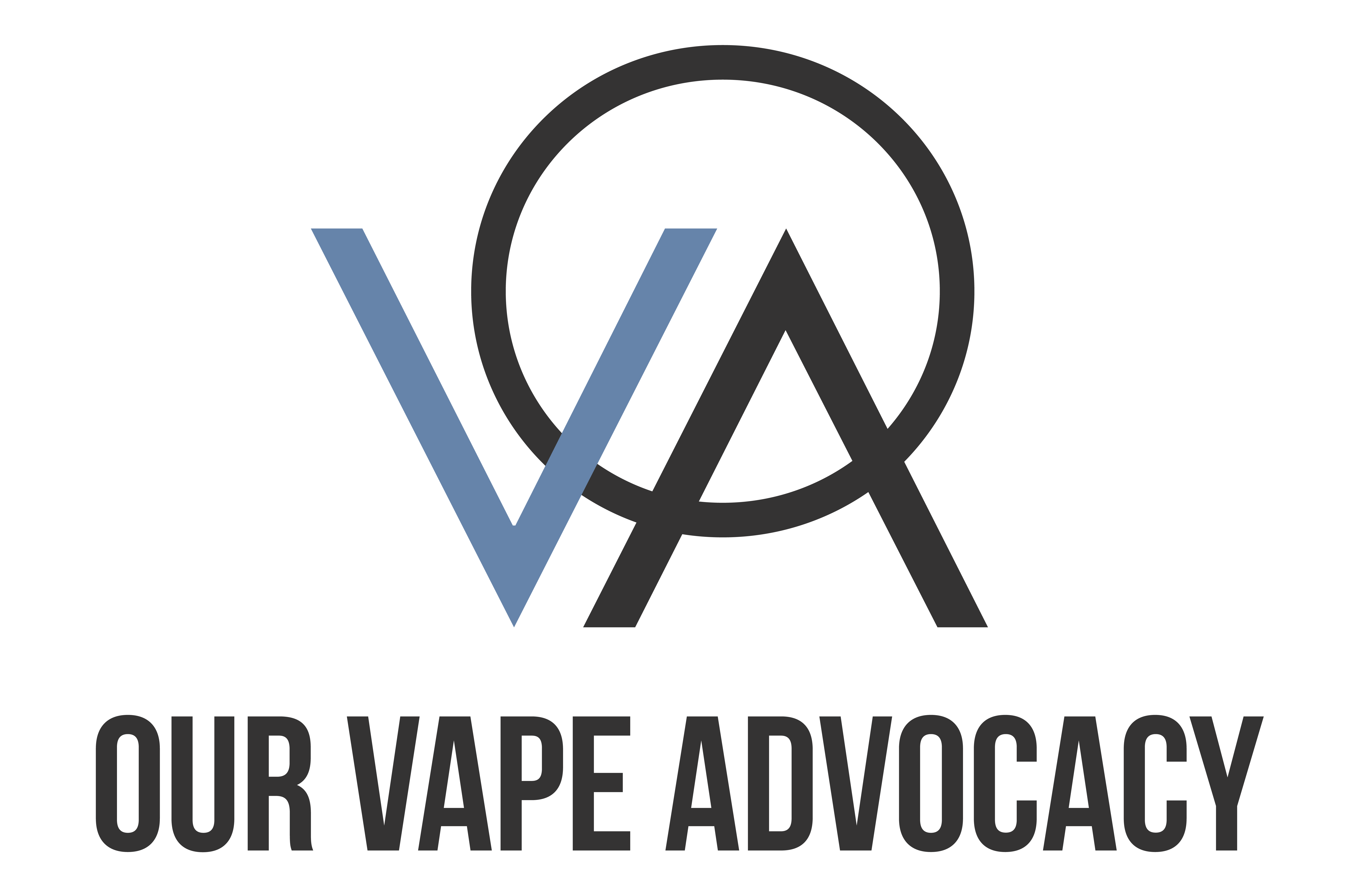Vaping legislation has undergone significant changes in recent years, affecting public health, economics, and the vaping industry.
Here at Our Vape Advocacy, we believe understanding these impacts is essential for informed discussions.
This post will explore key regulations, compare regional differences, and examine recent updates.
What’s the Current Vaping Legislation?
Vaping legislation is a dynamic and evolving landscape marked by distinct regional differences and significant global trends. Understanding this can inform public health strategies, industry practices, and individual decisions regarding vaping.
Key Regulations Around the World
Globally, countries approach vaping regulation with diverse strategies. In the US, the FDA plays a critical role. The agency has banned flavored e-cigarettes except for tobacco and menthol, a move aimed at reducing youth appeal. Similarly, Australia enforces stringent laws, where nicotine-containing vape products require a prescription. Conversely, in the UK, e-cigarettes are endorsed as smoking cessation tools by healthcare professionals, highlighting the country’s harm reduction approach.
Regional Differences
Europe’s regulatory framework, informed by the Tobacco Products Directive (TPD), caps nicotine levels and restricts tank sizes. However, enforcement varies across member states. For instance, France and Germany closely align with TPD guidelines, while countries like Italy implement additional national restrictions. In Asia, countries like Japan ban nicotine vapes, while the Philippines recently legalized e-cigarettes with regulatory oversight.
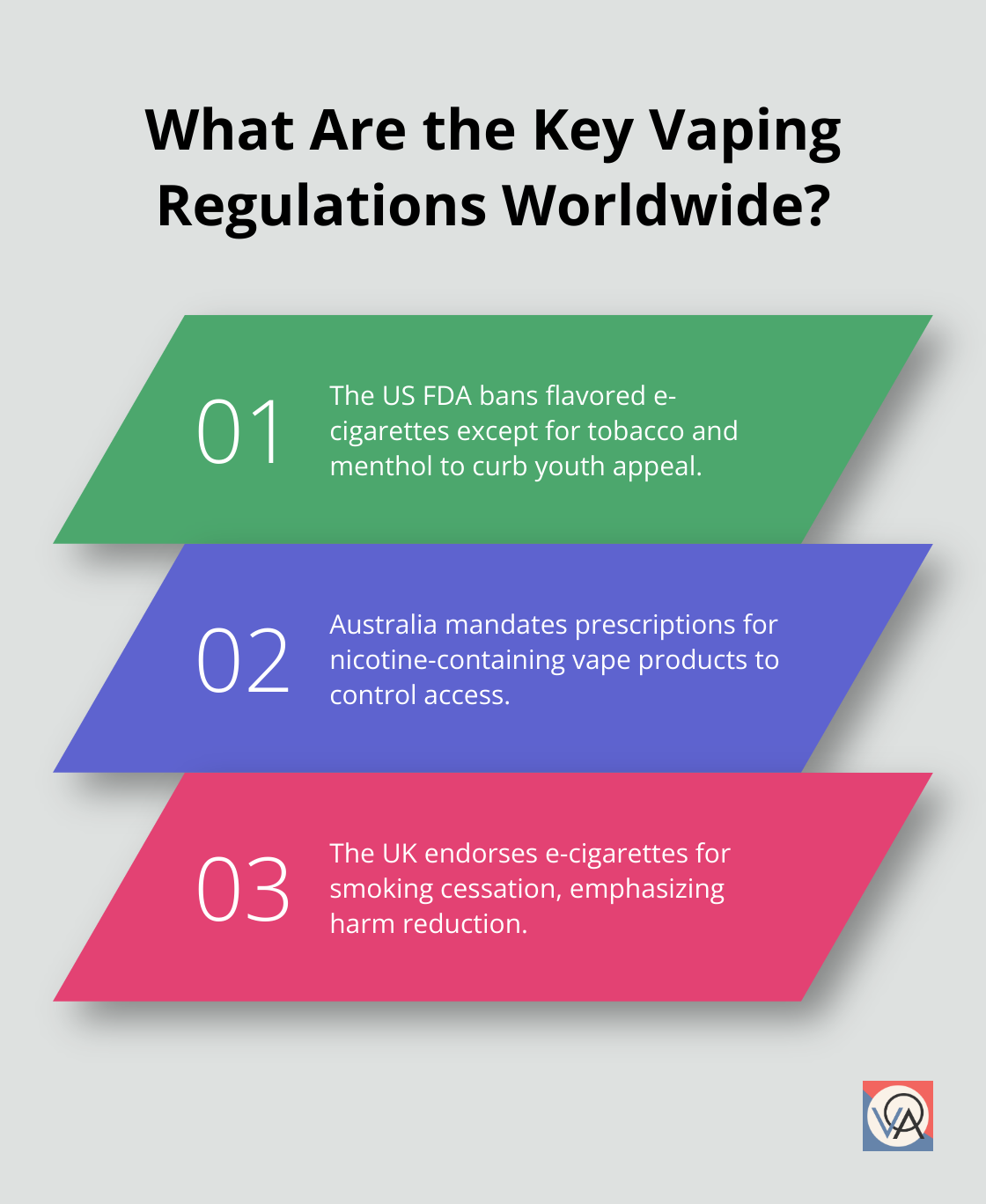
These differences impact market dynamics, consumer behavior, and public health outcomes. For example, New Zealand’s permissive stance on e-cigarettes has led to significant criticism for rolling back a world-first law banning tobacco sales for future generations, showcasing potential benefits and challenges of harm reduction policies.
Recent Changes and Updates
Recent months have witnessed rapid legislative updates. The US continues to grapple with FDA delays in evaluating e-cigarette market applications, resulting in a less regulated landscape susceptible to unauthorized products. Canada increased taxes on vaping products to curb youth usage, with early data indicating a decline in teen vaping rates.
Meanwhile, the UK’s rise in disposable e-cigarette use among young adults has prompted discussions on potential bans of these products to address nicotine dependence and environmental concerns. Additionally, several US states, including California, have implemented comprehensive flavor bans, leading users to shift towards non-flavored alternatives or cease usage altogether.
Examining these trends reveals a clear pattern: proactive regulation tailored to local contexts can significantly influence vaping prevalence and associated health outcomes. Effective policy enforcement remains pivotal, with ongoing adjustments necessary to address evolving market conditions and public health priorities.
Understanding the current landscape of vaping legislation helps in recognizing effective strategies and areas needing further regulation. This knowledge can guide policymakers, industry stakeholders, and individuals as they navigate the impacts of vaping in society.
How Does Vaping Legislation Affect Public Health?
The impact of vaping legislation significantly influences public health, with smoking and vaping outcomes showcasing clear differences. Here are some practical insights and statistics.
Smoking vs. Vaping Health Outcomes
Current data highlights that vaping, while not without risks, generally poses fewer health hazards compared to smoking traditional cigarettes. According to Public Health England, e-cigarettes are 95% less harmful than smoking. This statistic underscores the importance of vaping as a less damaging alternative for smokers.
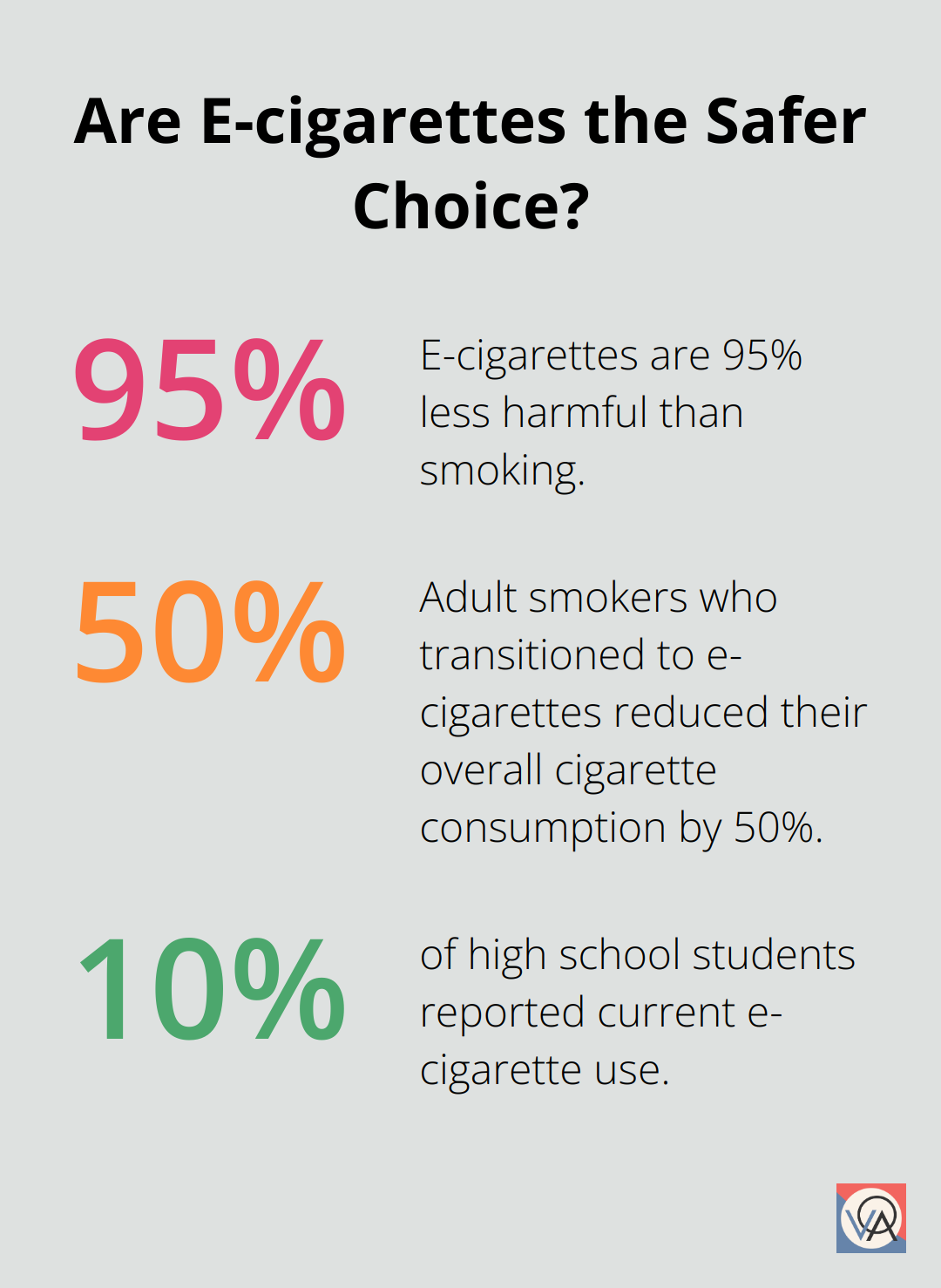
An analysis by the New England Journal of Medicine found that smokers who switched to vaping exhibited improvements in lung function and reduced exposure to harmful chemicals. Additionally, a 2023 study in the Journal of the American Medical Association reported that adult smokers who transitioned to e-cigarettes reduced their overall cigarette consumption by 50%.
Vaping as a Smoking Cessation Tool
Despite the potential benefits, the effectiveness of e-cigarettes as a smoking cessation tool remains contentious. The FDA has not approved any e-cigarette brand for this purpose. However, a 2019 clinical trial published in the New England Journal of Medicine demonstrated that e-cigarettes were more effective than nicotine replacement therapy in helping smokers quit, with an 18% success rate versus 9.9%.
Programs like “This is Quitting” have shown promise, offering tailored support and increasing the likelihood of young adults quitting vaping. These mixed results highlight the need for regulated, evidence-based approaches to utilize vaping in smoking cessation efforts effectively.
Youth Vaping Concerns
Youth vaping remains a pressing public health issue. The 2023 National Youth Tobacco Survey indicated that 10% of high school students reported current e-cigarette use, with a significant proportion favoring flavored products. This trend is worrying given the addictive nature of nicotine and the potential for long-term health implications.
Studies have shown that youth who vape are more likely to transition to traditional cigarettes. The CDC reported that youths who used e-cigarettes were four times more likely to start smoking cigarettes within a year than those who did not vape. Consequently, robust legislative measures banning flavored e-cigarettes and regulating marketing tactics are critical to curb youth vaping.
Understanding these impacts provides insight into effective public health strategies. Moving toward evidence-based policies that address both harm reduction and youth protection can help manage the complex landscape of vaping legislation.
What Are the Economic Implications of Vaping Laws?
The economic implications of vaping legislation are multifaceted, affecting the vaping industry, government tax revenues, and employment trends in the market.
Effects on the Vaping Industry
Vaping laws have a direct influence on the industry’s operational landscape. In regions with stringent regulations, such as Australia, the market is significantly restricted, driving some businesses to either comply or exit. The US market, on the other hand, is characterized by regulatory delays from the FDA, leading to a considerable presence of unauthorized products. This regulatory ambiguity has resulted in a proliferation of black market activities, where non-compliant products evade federal oversight, complicating efforts to control quality and safety.
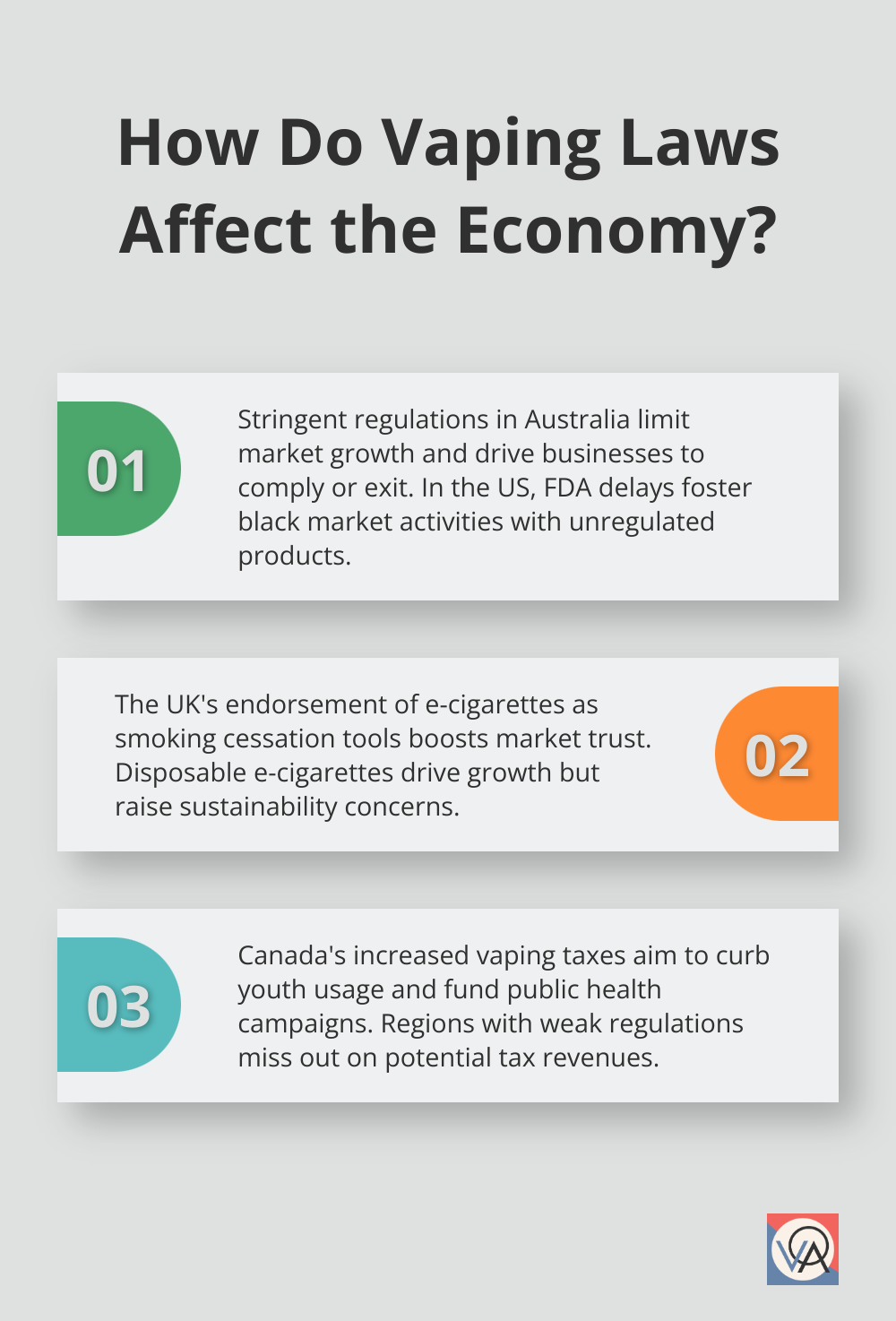
The contrast in the UK shows a different economic impact. As e-cigarettes are endorsed by public health officials as smoking cessation tools, the market sees robust growth. This regulatory support translates into increased consumer trust and higher sales. The rise of disposable e-cigarettes00091-7/fulltext) in the UK has also spurred substantial market expansion but also raised concerns about long-term sustainability and health impacts.
Changes in Tax Revenues
Taxation policies on vaping products significantly affect government revenues. In Canada, the recent increase in vaping product taxes is intended to curb youth usage. Early data reflects a decline in teen vaping rates, indicating that higher prices may deter youth consumption. These tax hikes also contribute to government coffers, potentially funding public health campaigns aimed at reducing youth vaping.
Conversely, in regions where regulations are less stringent or implementation is weak, potential tax revenues remain untapped. The lack of comprehensive regulation in the US leads to persistent market grey areas, where the financial benefits of taxation are not fully realized. This creates a missed opportunity for generating funds that could otherwise support public health initiatives.
Impact on Employment and Market Trends
The vaping industry’s employment landscape is equally influenced by legislation. In heavily regulated regions like Australia, the market constraints likely limit job creation within the sector, affecting businesses and workers alike. In the US, regulatory uncertainty creates an unstable environment for employment. Small and medium-sized enterprises (SMEs) in the vaping sector face difficulties in adapting to inconsistent regulations, further complicating job stability.
In the UK, where the market is more clearly regulated and viewed positively by public health authorities, job growth in the vaping industry is more robust. The rise in disposable e-cigarette use has spawned new business opportunities but also introduces challenges related to environmental sustainability and health regulation.
Analyzing these economic implications underscores the need for clear, balanced regulations. Effective policies can foster a stable market environment, ensuring consumer safety while enhancing tax revenues and supporting job creation. As legislation continues to evolve, the focus should remain on creating a framework that addresses public health concerns without stifling economic potential.
Conclusion
Vaping legislation has diverse effects on public health, economic factors, and the vaping industry. Regulatory measures globally show marked differences, with places like the US and Australia taking stringent steps to limit youth access to e-cigarettes, while the UK promotes them as a harm reduction tool. This variance in approach reflects complex regional priorities and public health strategies.
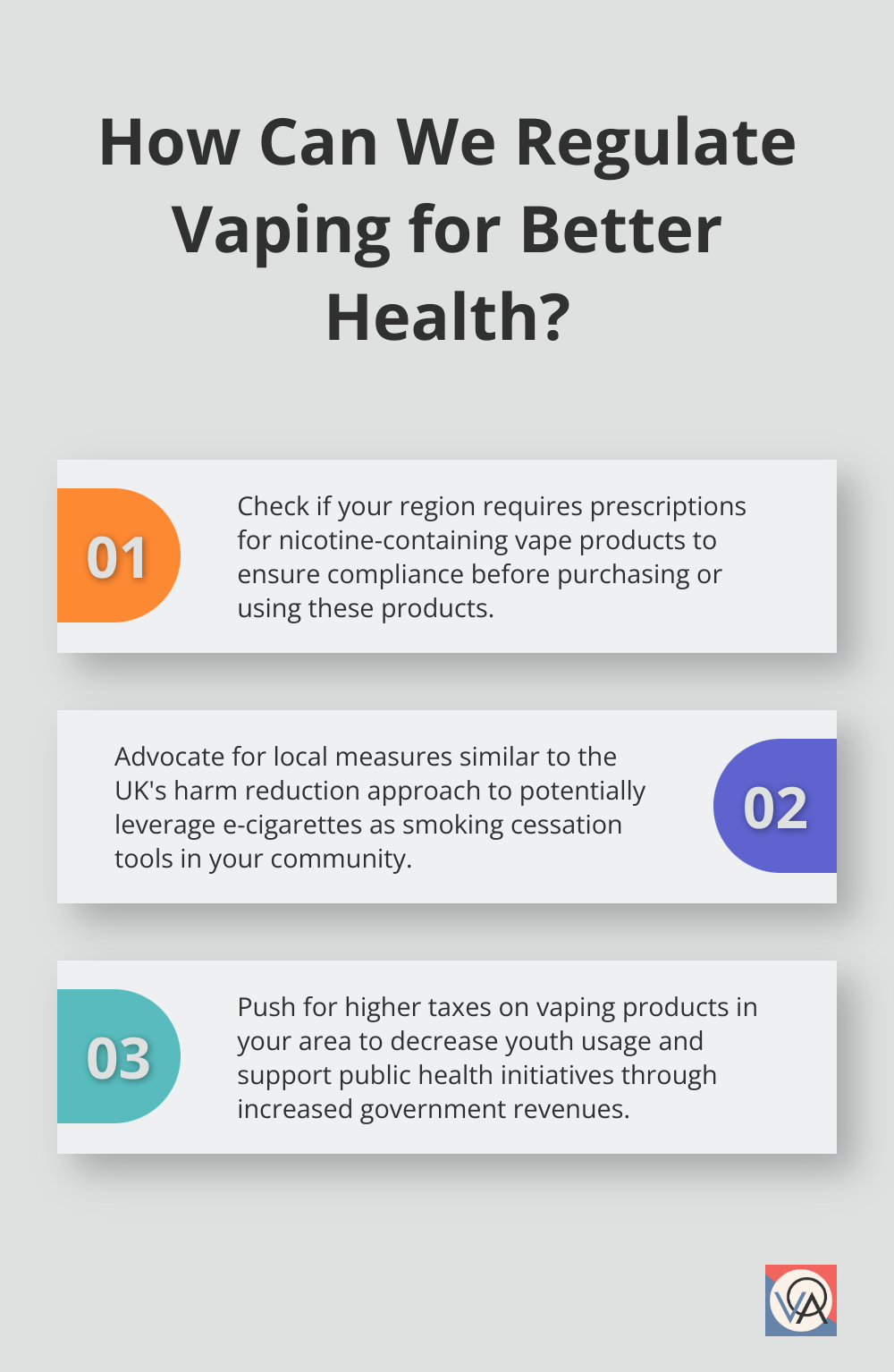
Balancing public health objectives with the economic implications of vaping laws is a challenge that requires ongoing adjustments. Tightened regulations can lead to reduced youth vaping rates, as seen in the aftermath of Canada’s tax increases on vaping products. Conversely, regulatory delays or ambiguities, particularly in the US, often result in black market activities and missed opportunities for tax revenue. The economic landscape also reflects these differences, with job creation and business stability varying significantly across regions.
Future directions in vaping policy should focus on crafting clear, balanced regulations that support harm reduction while addressing public health concerns. The rise in youth vaping underscores the need for robust legislative action, particularly around flavor bans and marketing restrictions. Emerging trends, like the increase in disposable e-cigarette use, further highlight the necessity for adaptive, evidence-based policies that can meet rapidly evolving market conditions. Effective collaboration between federal and state authorities, combined with continuous monitoring and enforcement, will be pivotal in shaping the future of vaping regulation.
We at Our Vape Advocacy aim to help shape a sustainable UK vape industry by uniting the sector to address legislative threats, protect businesses, and promote vaping as a harm reduction tool. To learn more about our initiatives and how we advocate for responsible vaping practices, visit our website. Together, we can contribute to advancing public health and fostering a transparent and responsible vaping industry.
